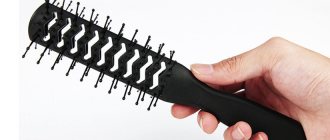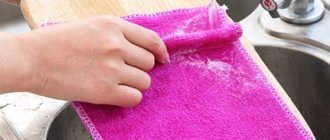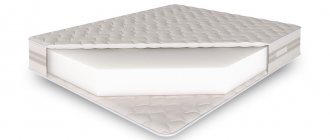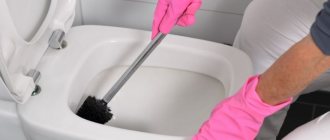Fecal coliform bacteria remain in the bathroom and are scattered throughout the room after the toilet user flushes; they can be a source of illness. You can get rid of the threat only with constant cleaning using antiseptics, but even this does not provide one hundred percent protection: particles can remain on door handles, combs and even toothbrushes.
In addition, devices for cleaning the mouth are already a breeding ground for pathogenic bacteria that remain after contact with the mucous membrane - in the future they can also cause infection. This is why it is so important to take care of their disinfection - we tell you how to approach the matter correctly.
Wash your hands before and after brushing your teeth
Bacteria and viruses are mainly transmitted through the palms - throughout the day they come into contact with many surfaces that are not always sterilely clean.
To stay safe during and after brushing your mouth, you should rinse your hands with soap and water for 20 seconds to remove any particles that might be left on the brush handle. After the procedure, you should also wash your palms to be on the safe side. In an interview with Insider, William Martin, president of the Maryland Dental Association, said that hand rinsing should, in principle, be a basic activity of every person - it will help reduce the risk of contracting viruses and infections, as well as minimize contamination of surfaces that a person touches.
Best models
There are different types of sterilizers available on the market. Let's look at the most popular ones:
- Gezatone T4 . Designed in France and holds four brushes. Looks like a convenient closed glass. Its lid has 4 cavities for personal care items. A plus is the presence of a tray for draining water, so the device will last longer.
- Esencia ESA-555 . A very practical device, as it has the ability to disinfect brushes, a machine and manicure devices. This is a universal option. It mounts to the wall and includes six holders and a tray. This manufacturer from South Korea has other models: Esencia ESA - 600, Esencia ESA - 300/302 and others.
- Recesky . Manufacturer – China. The device is designed for one item, but is very popular among consumers. And all thanks to the interesting design that children will really like. Each oval model comes in the shape of a panda, penguin, owl or ninja. The device is small in size, so it is convenient to take on trips.
- Timson is a popular compact model made in Russia. The sterilizer is designed for a single brush. The disinfection process lasts seven minutes. You can track how the device works through the upper part of the case, which is specially made transparent.
- Zero germ . Another portable device with an original design, made in China. Eliminates all germs in six minutes without damaging the bristles. Well suited for use at home and while traveling.
Learn how to properly store your toothbrush
The American Dental Association says it should be rinsed thoroughly under running water to remove any food, toothpaste, or tartar. After this, you should leave the brush to air dry in a vertical position - most bacteria die in an aerobic (oxygen) environment.
It is important to store the brush not in a case or small container, but in a spacious place, for example, a cabinet next to a mirror: the fact is that pathogenic particles may remain on the boxes for the device. Also, the brush should be left as far as possible from the toilet and be sure to close the lid before flushing it. You should also avoid leaving multiple brushes nearby, as germs can spread when they come into contact.
Proper use is important
Following good personal hygiene will not only keep your teeth healthy, but will also minimize the risk of bacteria colonizing your toothbrush. For it to serve faithfully, it is necessary:
- Use only a separate, personal brush. The oral cavity of every person is teeming with billions of bacteria. At the same time, everyone has their own microflora, which is in harmonious coexistence with the body. When someone else's microflora gets into another person's mouth, the result can be unpredictable. To protect themselves from diseases, all family members, including husband and wife, should have personal brushes.
- Brush your teeth regularly in the morning and evening for 5-6 minutes. Timely cleaning helps suppress the proliferation of microbes in the oral cavity. Accordingly, there are fewer of them left on the brush.
- Choose the right bristle stiffness and toothpaste. The less bacteria in your mouth, the cleaner your stubble remains. The correct selection of toothpaste and brush guarantees complete cleansing of teeth from plaque, in which pathogenic microorganisms live.
- After each meal, use dental floss and mouthwash. Brushing your teeth 3-4 times a day is practically impossible physically, and is also traumatic for tooth enamel. However, to prevent food debris from rotting between the teeth, they must be removed and washed off with mouthwash.
- Change your toothbrush every 3 months. Numerous studies have confirmed that within 90 days the brush is colonized by pathogenic organisms from the oral cavity. Even high-quality disinfection does not destroy them. In addition, during this period, with regular use, the bristles wear out, and they can no longer properly clean the teeth.
- Buy a new brush after an infectious disease or professional teeth cleaning. Antibodies fight infection in the body. But pathogens survive well on a toothbrush, so it is recommended to change it after an illness. As for professional sanitation, it destroys 99.9% of harmful microorganisms in the mouth. To ensure that the cleaning result lasts as long as possible, it is better to throw away the old hygiene item with bacteria or give it a second life as a device for cleaning hard-to-reach surfaces.
We recommend: How to make a small bathtub as comfortable and functional as possible
Disinfect the brush
If you want to take extra precautions, or if you dropped the device on the floor, you can use hydrogen peroxide or mouthwash.
The first solution is a good antiseptic that destroys harmful particles picked up by the brush from the ground. The second contains alcohol, menthol and eucalyptol, which also help get rid of bacteria. To do this, rinse the bristles under running water, pour a little antiseptic into a glass - enough to cover the brush head, and soak the device for 10-15 minutes. Afterwards, rinse it again and leave it to dry in the open air.
Read on topic:Why and how to cleanse makeup products
Electric brush care
In general, you need to care for an electric toothbrush in the same way as a regular one. The processing rules are not too different. The pocket with batteries and microcircuit is reliably protected from moisture, so the device can be washed without fear.
However, there are several important nuances that need to be taken into account when caring for an electric brush:
- The bristle head wears out within 3 months and must be replaced.
- Discharged batteries should never be left in the device. They may start to leak. Then not only will the brush be damaged, but the acid may get into your mouth and cause poisoning.
- After use, the electric brush should be rinsed with warm water and dried.
When trying to disinfect the device, it is important not to overdo it. Boiling may cause the product to melt. According to GOST, an indicator of 1000 CFU/cm3 of microorganisms on bristles is the norm and, in the absence of diseases of the immune system, cannot lead to infection.
Every day, billions of bacteria come into contact with your toothbrush from your mouth. Among them are streptococci, staphylococci, E. coli, porphyromonas gingivalis, herpes and hepatitis viruses A, B, C, candida albicans, coliform and many others. Improper care can lead to frequent illnesses. It is important to thoroughly wash and dry the bristles, choose a suitable place to store brushes, and observe personal hygiene rules. Every 3 months the device must be replaced.
Use ultraviolet light
According to a study published in the American Journal of Dentistry back in 2008, UV light kills bacteria and some viruses by disrupting their molecular bonds. It also found that light was slightly less effective than alcohol or peroxide, but if you have an ultraviolet lamp on hand, this is a good way to use it.
Leave the brush next to it for a few minutes, then air it out in the open air. We do not recommend using a dishwasher or microwave as an alternative - the high temperature inside the equipment can damage the brush or even melt it.
Duration of operation
Each dentist may give different advice regarding the duration of use of one device. The best option is one month, but up to 100 days is acceptable. You can purchase special brushes that have wear indicators.
You need to buy a new item in the following cases:
- service life exceeded 3 months;
- after suffering from any diseases of the gums, teeth and oral cavity, including runny nose and common colds;
- the bristles began to “look in different directions”, some of its elements became bent and worn out - in this case, brushing your teeth will be less effective.
The note. Before the first use, simply rinse the purchased device in running water, after soaping the bristles.
Keep your brush safe while traveling
To ensure that it does not become a breeding ground for bacteria, get a separate case or cosmetic bag where only the cleaning device will be stored.
Upon arrival, unpack your things, leaving the brush in the bathroom and rinsing it first. Before you leave, rinse it, dry it thoroughly, disinfect the storage case and place the brush in it.
Device examples
- Donfeel HSD-005 . Ultrasound frequency 1.7 MHz (102 million vibrations per minute). The device runs on batteries. The kit includes three attachments. The brush operates in two modes: standard and delicate cleaning mode.
- Megasonex m8 . Ultrasound frequency 1.6 MHz (96 million vibrations per minute). The device runs on battery power. There are three operating modes: intensive, gentle, ultrasound only.
- Emmi-dent 6 Ultrasound Toothbrush . Product from a German manufacturer. Ultrasound frequency 1.6 MHz. Two nozzles included and one nozzle for removing soft plaque. The device runs on battery power.
How to clean the washing machine drain filter
This filter is located on the front side of the washing machine in its lower part (left or right). Typically, the filter is hidden behind a removable panel or small hatch. It is really necessary to clean it, since fabric fibers, large debris and dirt can become trapped in it. Over time, the water will not completely drain from the machine, and the clothes will remain wetter after spinning.
To clean the filter, turn off the power and turn off the water supply. Before removing the filter, prepare a basin and a rag - there is always water in the drain system. Remove the filter and clean any large debris, then wash the filter with a coarse sponge under running warm water. Be sure to check the hole in the machine and also clean it of any remaining debris, dirt and plaque. Then return the filter to its place, making sure that it fits in without distortion, and tighten the filter plug. Don’t forget to plug in the machine immediately after installation and check for leaks using a test rinse. If not a drop has leaked out from under the filter cover, you can replace the closing panel.
How to clean a microwave: 3 super ways for different stains + life hack for cleaning the door











